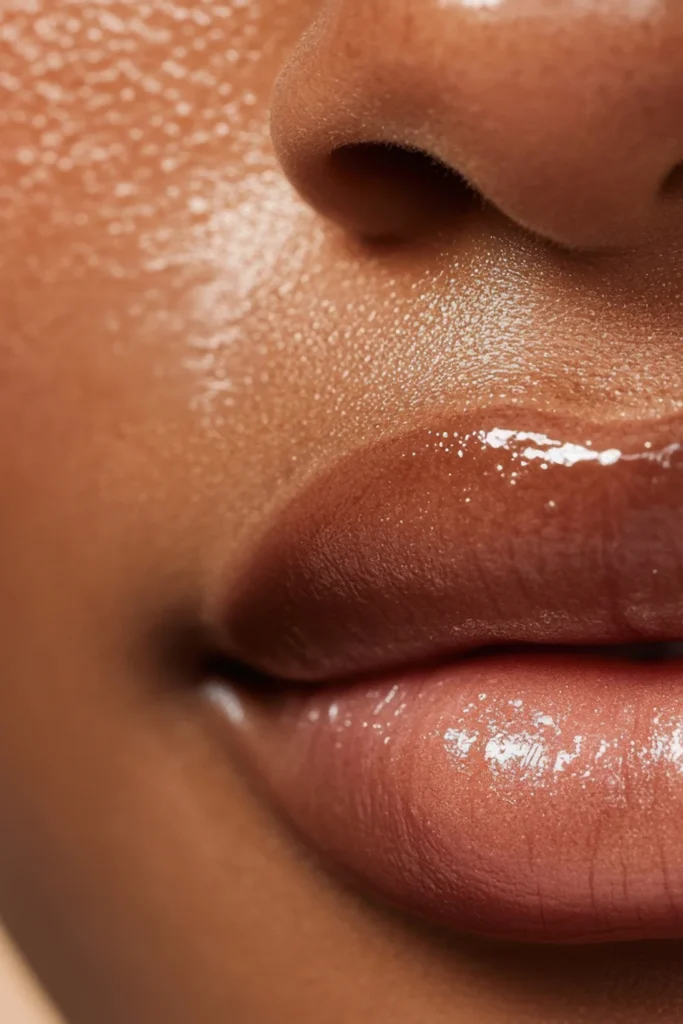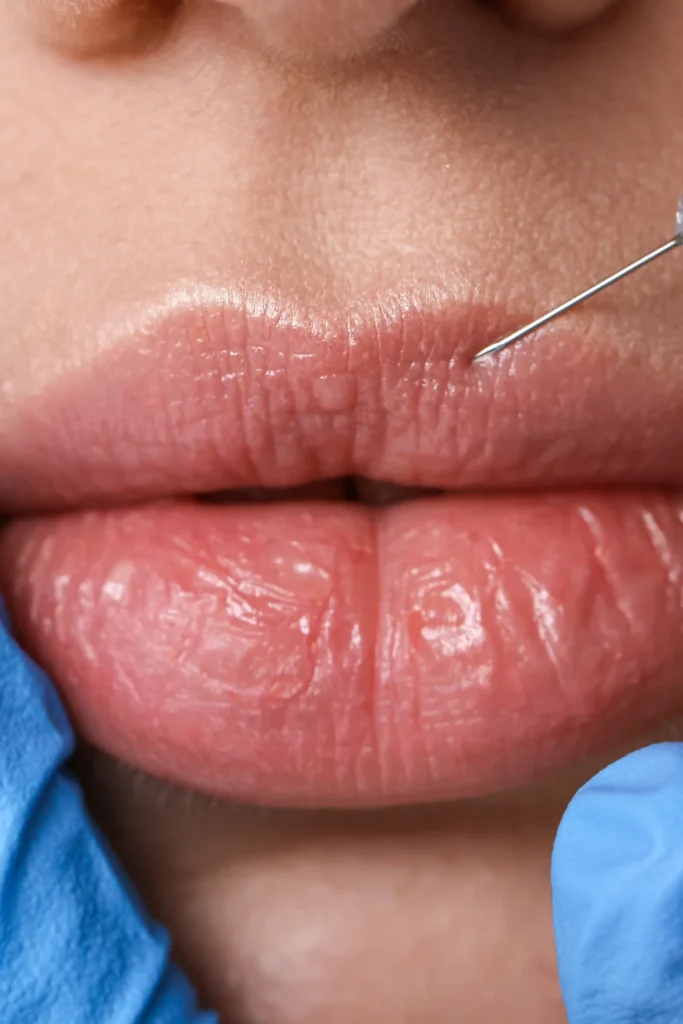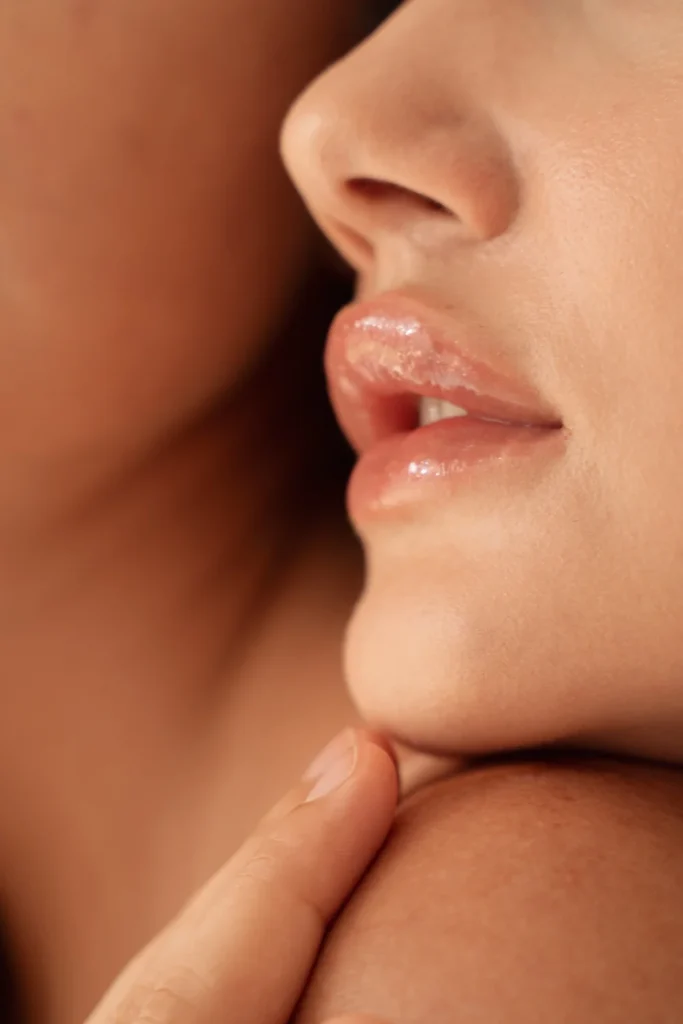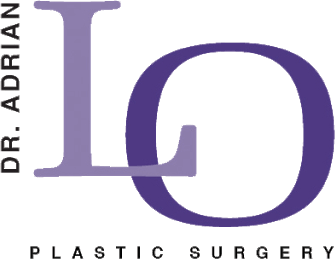The space between your nose and upper lip often lengthens as you age, changing the proportions of your facial aesthetics making you lose your youthful look. Most people do not notice this change until they look closely at their profile.
A surgical lip lift is a permanent procedure designed to correct the lip lengthening that happens with age to restore the facial balance. Unlike fillers, a lip lift is a permanent solution, thus eliminating the need for multiple treatments throughout the year.

Patients often report that friends comment on how refreshed they look without pinpointing exactly what changed. This subtle yet significant improvement distinguishes the lip lift from more obvious cosmetic enhancements. Precision matters. The millimeters adjusted during this procedure transform proportions throughout the entire lower face, affecting how you appear in both photographs and daily interactions.
Understanding this procedure means recognizing that structural improvement is different from volume enhancement in creating authentic facial rejuvenation.
Understanding Lip Lift Surgery
Definition and Purpose of Lip Lifts
A lip lift is a surgical procedure designed to shorten the distance between the nose and the upper lip, enhancing the appearance of the lip area without adding volume. This procedure differs from injectable fillers which are used to enhance the lip.
The procedure shortens the skin above the upper lip creating a more aesthetically pleasing lip-to-face ratio.
This surgical technique addresses the natural elongation of the upper lip that occurs with age, restoring a more youthful appearance to the entire lower face. A lip lift creates permanent results that cannot be achieved with injectable treatments alone.
A properly performed lip lift corrects disproportionate facial features, improves dental show when smiling, and restores the youthful contours that naturally diminish over time. The results appear natural because they reflect proportions that align with classical aesthetic ideals.
Facial Aging and Its Effects on the Lips
The aging process affects facial features in predictable patterns, with the lip area experiencing significant changes over time. The philtrum, which is the center portion of the upper lip, naturally elongates with age, often extending from an ideal 11-13 millimeters in youth to 15-20 millimeters in later decades.
Simultaneously, the upper lip begins to invert or curl inward, reducing the visible pink tissue that contributes to a youthful appearance. This phenomenon, combined with volume loss in the vermilion, the pink area of the lips, creates the characteristic thin-lipped appearance associated with advancing age.
Additional changes include the flattening of the Cupid’s bow, diminished projection of the upper lip, and downturning of the oral commissures (corners of the mouth) contributing to a downward smile. Even individuals with naturally full lips experience these structural changes, which injectable fillers cannot address.
Ideal Facial Proportions and Aesthetics
Facial aesthetic standards have remained remarkably consistent across cultures and throughout history. The ideal lip proportions follow recognized mathematical ratios: the lower lip should be approximately 1.5 times the volume of the upper lip, and the distance from the base of the nose to the vermilion border should measure approximately 1/3 of the distance from the base of the nose to the base of the chin.
Beyond these measurements, aesthetic attractiveness also involves the visibility of dental edges when the lips are at rest, the definition of the Cupid’s bow, and the smooth transition from the vermilion border to the surrounding skin.
A properly performed lip lift respects these aesthetic principles resulting in facial harmony.
Types of Lip Lift Procedures

The lip lift can be customized to address varying degrees of philtrum elongation and vermilion exposure. Each technique offers specific advantages that may better suit particular anatomical presentations or aesthetic goals.
Subnasal/Bullhorn Lip Lift
The Bullhorn lip lift derives its name from the shape of the incision, which resembles a bull’s horns when viewed from below. The bullhorn lip lift, also known as the subnasal lip lift, represents the most frequently performed technique.
Named for the characteristic bullhorn-shaped incision that follows the natural contours of the base of the nose, this approach conceals the incision in the natural shadow and texture changes between the nose and upper lip.
During this procedure, the plastic surgeon removes a precisely measured strip of skin just beneath the nose. When the incision is closed, the upper lip is elevated, exposing more of the vermilion and creating a more prominent Cupid’s bow.
The primary advantages include excellent scar concealment, consistent results, and the ability to customize the degree of elevation across different portions of the lip.
Direct Lip Lift
The direct lip lift also known as vermilion advancement or a ‘Gullwing’ Lip Lift involves an incision made directly above the vermilion border of the upper lip. A narrow strip of skin is removed, and when the incision is closed, the lip is elevated. This technique offers the plastic surgeon control over the shape of the lip border and is effective for enhancing the definition of the Cupid’s bow.
However, the resulting scar sits at the junction between the normal skin and the vermilion, making it potentially more visible than with other techniques. For this reason, the direct approach is often reserved for patients with significant photodamage, deeply etched vertical lip lines, or those who require very specific reshaping of the lip border itself.
The direct lip lift can be performed as an office procedure under local anesthesia.
Direct lip lift cost typically ranges between $3,000-$5,000, varying based on geographic location, facility fees, and the plastic surgeon’s experience.
Corner Lip Lift
The corner lip lift specifically addresses the downturned appearance of the mouth that often accompanies aging. Small incisions are made at the oral commissures (corners of the mouth), and triangular or crescent-shaped pieces of skin are removed. This elevates the corners of the mouth, correcting the downturned expression or frown that many patients do not like.
This technique may be performed as a standalone procedure or in conjunction with other lip lift methods. It is particularly beneficial for patients whose primary concern centers on negative oral commissures rather than philtrum length or vermilion show.
Central and Italian Lip Lift Variations
The central lip lift focuses elevation on the middle portion of the upper lip, maximizing enhancement of the Cupid’s bow. This technique involves removing a small amount of skin directly beneath the columella (the tissue between the nostrils) resulting in a subtle lifting of the central lip.
The Italian lip lift utilizes two small incisions under each nostril base. This approach provides more subtle lifting of the upper lip however does not lift the center of the lip.
The Lip Lift Procedure: Step by Step
The lip lift procedure typically takes approximately one hour, depending on the specific technique used. This outpatient surgery follows a carefully planned sequence to ensure optimal results.
Anesthesia Administration
The type of anesthesia used depends on several factors, including the specific technique selected, anticipated procedure duration, patient preference, and medical history. Many lip lifts can be performed under local anesthesia alone, which involves injections to numb the surgical site while you remain fully conscious.
Some patients prefer the addition of oral or intravenous sedation to reduce anxiety and awareness during the procedure. Complex cases or those combined with additional facial procedures may warrant general anesthesia. Your plastic surgeon will recommend the most appropriate option based on your individual circumstances and safety considerations.
Incision Placement and Tissue Removal
Precision in incision placement fundamentally determines both functional and aesthetic outcomes. The plastic surgeon begins by marking the planned incision lines with the patient in an upright position to account for natural tissue positioning.
Once anesthesia takes effect, the surgeon creates the incision following these predetermined markings.
For the common bullhorn technique, the incision follows the natural contour where the base of the nose meets the upper lip. The plastic surgeon then carefully removes a predetermined amount of skin, typically 5-7 millimeters at the maximum point.
The exact shape and dimensions of this excision are customized to address your specific anatomy and desired outcome.
Suturing Techniques and Closure
After tissue removal, the plastic surgeon meticulously realigns the edges of the remaining skin. This step requires exceptional precision to ensure symmetry and natural contour. The technique employs multiple layers of sutures: deeper layers to relieve tension on the skin and fine superficial sutures to achieve precise alignment of the skin edges.
Modern closure methods incorporate absorbable sutures for deeper layers and fine removable sutures with advanced adhesives for the skin surface.
This multilayered approach minimizes tension across the healing incision, reducing the potential for noticeable scarring.
Related: Upper vs Lower Blepharoplasty: Which Eye Procedure Do You Need?
The Recovery Journey
First 48 Hours After Surgery

The initial recovery phase focuses on controlling swelling and protecting the surgical site. You will leave the surgical facility with light dressings covering your incisions, which generally remain in place for 24-48 hours.
Mild swelling and bruising should be anticipated, particularly around the nose and upper lip. Cold compresses applied intermittently help minimize these effects.
Discomfort during this period is typically manageable with over the counter pain medication. You must keep your head elevated at all times, including while sleeping, to reduce swelling. Speaking and smiling should be minimized to avoid placing tension on the healing incision.
A soft diet is recommended, avoiding foods that require significant mouth opening or movement is also recommended to avoid compromising your lip lift surgery.
Weeks 1-2: Managing Swelling and Sutures
By the end of the first week, external sutures are typically removed, though some plastic surgeons opt for absorbable sutures that dissolve naturally. Swelling begins to subside noticeably, though the upper lip may still appear tight and somewhat unnatural. This resolves gradually as tissues adjust to their new position.
Lip lift recovery time varies among patients, but most can return to non-strenuous activities within 7 to 10 days after surgery.
You may begin applying topical ointments to the incision as directed by your plastic surgeon. Makeup may be permitted after approximately 10 to 14 days, though specific timing varies based on healing progression.
Most patients feel comfortable returning to work and social activities after 1 to 2 weeks.
Scar products may be used to improve the scar appearance beginning at 2 to 3 weeks.
Months 1-3: Scar Maturation and Final Results
The incision continues to mature over several months following surgery. Initially appearing red or pink, the scar gradually fades to a thin white line that blends with surrounding skin, particularly when placed in the natural shadow beneath the nose.
Diligent sun protection is essential during this period, as ultraviolet exposure can permanently darken healing scars.
The final aesthetic outcome becomes apparent as residual swelling resolves completely, typically by three months post-procedure. During this period, the upper lip settles into its final position.
Potential Considerations and Results
Common Side Effects and Their Management
All surgical procedures have potential side effects. Following a lip lift, these commonly include swelling, bruising, temporary numbness, and mild asymmetry during the healing process. These temporary effects resolve spontaneously with time.
Less common issues include prolonged numbness, visible scarring, or slight contour irregularities. Most of these concerns respond to conservative management. Numbness typically resolves within several months as nerve function returns.
Scar appearance improves with topical treatments and proper sun protection. Laser therapy may be recommended for mature scars that remain prominent.
Long-Term Results and Longevity
Unlike temporary fillers that dissolve over months, the lip lift creates permanent anatomical change. The shortened philtrum and enhanced lip eversion remain stable for many years. Natural aging will still continue, but the improved proportion between the nose and upper lip persists relative to how the face would have appeared without intervention.
Many patients report increased confidence following their lip lift, appreciating both aesthetic improvement and the emotional benefits of facial rejuvenation.
Most patients undergo this procedure only once in their lifetime. However, some individuals choose to combine lip lifting with other procedures as part of comprehensive facial rejuvenation. The permanence of results underscores the importance of selecting a qualified plastic surgeon with specific experience in this specialized technique.
Complementary Procedures for Enhanced Results
While the lip lift addresses structural proportion and eversion, it does not add volume to the lips themselves. For this reason, some patients benefit from complementary procedures that address different aspects of lip aesthetics.
Selective use of dermal fillers can enhance lip volume, particularly in the lower lip, to maintain ideal proportion with the newly lifted upper lip.
Additional procedures that frequently complement lip lifting include rhinoplasty to refine nasal appearance, chin augmentation to improve lower facial proportion, or various skin resurfacing techniques to address fine lines around the mouth.
When appropriately selected, these complementary approaches enhance overall facial harmony while maintaining natural-appearing results.
Lip Lift Alternatives and Comparisons
Dermal Fillers vs. Surgical Lip Lifts
Injectable dermal fillers represent the most common alternative to surgical lip lifting. These temporary solutions add volume to the lips but cannot correct philtrum length or increase vermilion through structural repositioning. Fillers can create fuller lips but cannot replicate the subtle eversion and Cupid’s bow definition achieved through surgery.
When evaluating lip lift vs lip filler options, remember that fillers add volume while surgical intervention corrects structural positioning. Upper lip lift surgery addresses age-related changes that traditional fillers cannot correct, including philtrum elongation and inversion of the vermilion border.
The primary advantages of fillers include their non-surgical nature, immediate results, and reversibility. However, they require repeated treatments every 6-12 months to maintain results. For patients primarily concerned with upper lip length, dental show, or lip eversion rather than volume, the surgical approach offers a permanent solution addressing the underlying structural issue.
Other Surgical Options for Lip Enhancement
V-Y advancement techniques create fullness by advancing tissue from within the mouth outward. This approach can be effective for volume enhancement but does not address philtrum length like a traditional lip lift procedure. Each surgical option offers specific advantages and limitations, highlighting the importance of individualized assessment to determine the most appropriate intervention.
Schedule Your Personalized Lip Lift Consultation With Dr. Adrian Lo
Understanding what a lip lift can do is the first step in determining how this transformative surgery can help you achieve the look you desire. Contact Dr. Adrian Lo’s office to schedule your in-depth consultation. During this appointment, Dr. Lo will analyze your unique facial structure, measure your philtrum length, and assess how a lip lift can enhance your overall facial harmony to meet your aesthetic goals!
